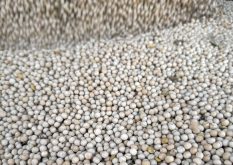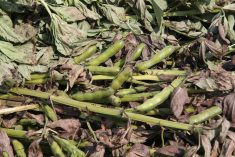Statistics Canada’s lentil number was the most hotly contested of the agency’s September pulse production estimates.
Stat Publishing said the 1.71 million tonne forecast was at least 200,000 tonnes below trade expectations. Some think the final number could exceed the 2009-10 record of two million tonnes.
Marlene Boersch, partner in Mercantile Consulting Venture Inc., may be the exception. She thinks Statistics Canada’s estimate is a reasonable number.
“I might be wrong but I have the sentiment that in some areas the lentil production wasn’t quite the record highs of some of the other crops,” she said.
Read Also

Biofuel sector happy with federal budget
Advanced Biofuels Canada says new Biofuel Production Incentive is a lifeline until CFR amendments are in place.
Using Statistics Canada’s number would result in about two million tonnes of total lentil supply, which is a big crop to move.
Fortunately, world production is expected to be down about 10 percent in the major exporting and consuming nations.
The U.S. has a smaller crop, Turkish production is down about 50,000 tonnes, Syria has nothing to export and there is talk that Indian production will be down as growers in that country switched to alternative crops.
“We shouldn’t have too much of a problem to market most of the volume that we have. Will the values go up? Potentially,” said Boersch.
For that to happen the pace of exports will have to pick up. A slow start to the season has been exacerbated by political unrest in the Middle East.
“The pipeline isn’t pulling as nicely as it has been on the peas,” she said.Statistics Canada is forecasting a record 3.78 million tonnes of pea production.
“I think production could even be slightly higher yet,” said Boersch.
She’s not overly concerned about the giant pea crop. China has been an active buyer early this crop year and Boersch expects India will be a big buyer once again despite forecasts for a good kharif or winter chickpea crop.
Shipments to India are off to a much slower start than last year but Boersch remains hopeful for the remainder of the 2013-14 marketing campaign.
“Peas are still by far the cheapest pulse and I think we’ll do more of our regular exports to India,” she said.
Boersch is forecasting 450,000 tonnes of pea carryout, up from 174,000 tonnes last year, which is bearish for prices.
“Our stocks-to-use ratio will certainly go up,” she said.The biggest special crops surprise was the canaryseed estimate of 97,500 tonnes, the smallest birdseed harvest since 1988’s crop of 59,900 tonnes.
Stat Publishing said many in the trade believe the seeded area was as big as last year, which would suggest a crop of 155,000 tonnes.
Boersch believes Statistics Canada has underestimated acreage, yield and carryout.
“If their numbers are correct we’d have to export less than 100,000 tonnes. I think we can do a little better than that,” she said.
But it is clear there won’t be enough canaryseed to service the usual 175,000 tonnes of demand.Boersch said the biggest problem in the canaryseed industry is a lack of information on factors like price and crop movement.
“It has become a very, very difficult commodity. Farmers’ values are suffering because we don’t really know the flow anymore and price visibility is not great,” she said.
















